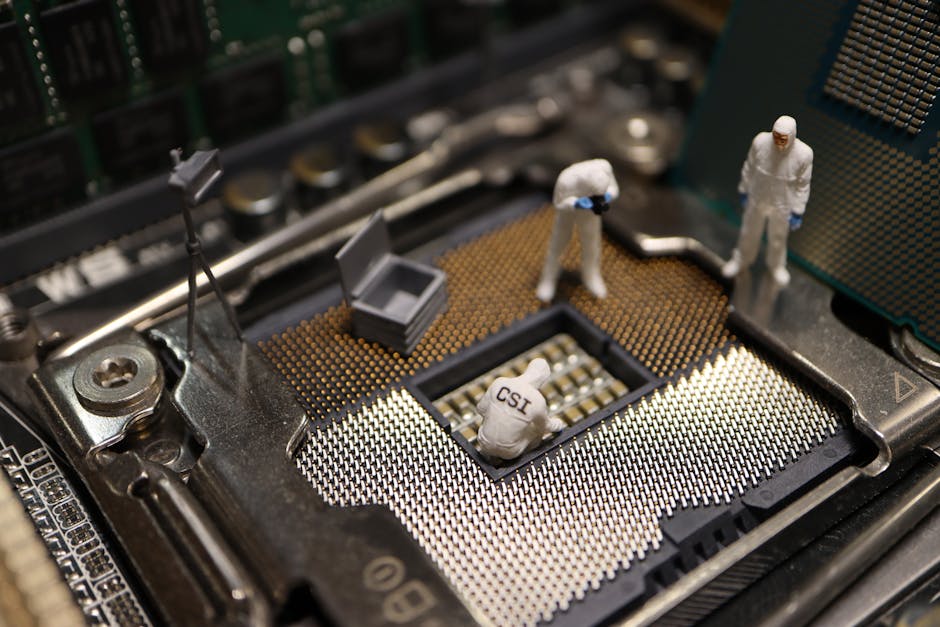OpenAI’s recent decision to release open-weight AI models has significant implications for various sectors, particularly those handling sensitive data. OpenAI’s shift to open source allows for greater control and customization, making these models attractive to entities like the US military. The ability to install these models locally, without relying on cloud connections, is a game-changer. You’ll learn to assess AI models and their implications in this guide. This move is poised to increase competition and drive innovation in the AI field. This article explores the potential benefits, challenges, and broader impacts of this development.
Table of Contents
We Also Published
OpenAI’s Open-Source Shift: A New Era for Military AI?
OpenAI’s recent foray into open-source models has sparked considerable interest, particularly within the US military and defense sector. This shift presents new opportunities for secure operations and the development of customized AI solutions. The following sections will provide an in-depth analysis of the implications of OpenAI’s move, exploring its potential benefits, challenges, and broader impact on the landscape of AI in defense.
The Promise of Open-Weight Models for Secure Operations
The core advantage of OpenAI’s open-weight models, gpt-oss-120b and gpt-oss-20b, lies in their ability to operate locally. This feature allows users, including military contractors, to install the models on their own devices without the need for a cloud connection. This local operation is crucial for handling sensitive information. It addresses the need for air-gapped systems, where software must reside on government servers and function without internet access, a critical requirement for maintaining data security and confidentiality. By offering open-weight models, OpenAI enables the military and its contractors to tailor AI solutions to specific needs, enhancing operational capabilities while adhering to stringent security protocols.
Key Benefits of Local AI Deployment
Competitive Landscape and Technological Advancements
While OpenAI’s open-source models offer significant advantages, they currently face competition from established players. Initial assessments suggest that OpenAI’s tools may lag behind competitors in some capabilities. However, the introduction of OpenAI into the open-source market is expected to invigorate competition, leading to better-performing systems. This competition is likely to drive innovation, resulting in more sophisticated and efficient AI solutions for various applications. Organizations frequently utilize a combination of models, including open-weight ones, to enhance reliability across different operational scenarios. The evolution of AI models is heavily influenced by their training data. Therefore, the open-source approach allows for iterative improvements and the incorporation of specialized datasets.
Impact on Military and Healthcare
The shift towards open-source AI models is particularly relevant for sectors like the military and healthcare, where data sensitivity is paramount. These models offer a pathway to develop AI systems that can operate securely, meeting the specific needs of these industries. The adaptability of these models is particularly valuable in the military context, where rapid technological adaptation is critical. The integration of generative AI into battlefield systems and back-office functions is a strategic goal for the Department of Defense. This integration underscores the importance of cloud-independent models that can be adapted and deployed in diverse environments.
OpenAI’s Strategic Considerations and Community Impact
OpenAI’s move to open-source models offers several strategic advantages. The approach facilitates the growth of a broad community of experts, which accelerates the development and refinement of its technologies. The absence of formal customer relationships also provides OpenAI with a degree of discretion, enabling it to avoid potential criticism related to the customers it serves, such as the military. The accessibility of these models fosters innovation and collaboration, driving the evolution of AI technologies. This approach not only benefits OpenAI but also contributes to the broader advancement of AI across various sectors. The flexibility of open-source models makes them attractive for diverse applications, including intelligence analysis and secure data processing.
The Role of Community and Collaboration
OpenAI’s open-source strategy promotes a collaborative environment, bringing together experts from various fields to enhance the capabilities of its models. This collaborative approach leads to a more robust and adaptable AI ecosystem, where developers can build upon each other’s work. The shared knowledge and resources available in open-source projects accelerate the development cycle and promote the rapid adoption of new technologies. The ease of access to these models encourages experimentation and the exploration of new use cases, ultimately contributing to the advancement of AI.
Conclusion: Charting the Future Landscape
OpenAI’s open-source models represent a significant development in the AI landscape, particularly for sectors prioritizing data security and customization. The shift toward open-weight models offers new opportunities for military and healthcare applications, while also promoting innovation and collaboration. As these technologies evolve, they will likely play an increasingly crucial role in shaping the future of AI. The ongoing development of open-source AI models is expected to drive further advancements, fostering a dynamic and competitive environment.
| Feature | OpenAI’s Open-Weight Models | Implications |
|---|---|---|
| Deployment | Local, no cloud connection needed | Enhanced data security, suitability for air-gapped systems |
| Customization | Access to model weights for tailoring | Ability to create specialized AI solutions for specific purposes |
| Competition | Entry into the open-source market | Increased competition, potentially better-performing systems |
Also Read
From our network :
- JD Vance Charlie Kirk: Tribute and Political Strategy
- Bitcoin price analysis: Market signals after a muted weekend
- Limits: The Squeeze Theorem Explained
- Economic Importance of Soybeans in America: The $60 Billion Crop That Feeds the World
- The Diverse Types of Convergence in Mathematics
- Optimizing String Concatenation in Shell Scripts: quotes, arrays, and efficiency
- Limit Superior and Inferior
- Optimizing String Concatenation in JavaScript: Template Literals, Join, and Performance tips
- Bitcoin Hits $100K: Crypto News Digest
RESOURCES
- How to assess a general-purpose AI model's reliability before it's ...
- How do we assess the trustworthiness of AI? Introducing the ...
- Evaluate Generative AI Models and Apps with Azure AI Foundry ...
- The MITRE AI Maturity Model and Organizational Assessment Tool ...
- Evaluation of an AI Model to Assess Future Breast Cancer Risk ...
- Opinion 28/2024 on certain data protection aspects related to the ...
- Evaluating AI models
- Evaluation of an AI Model to Assess Future Breast Cancer Risk
- Artificial Intelligence Risk Management Framework (AI RMF 1.0)
- Assessment of Large Language Models in Clinical Reasoning: A ...
- Assessing prognosis in depression: comparing perspectives of AI ...
- Scale Partnering with the US AISI to Evaluate AI Models | Scale
- Generalizability assessment of AI models across hospitals in a low ...
- Test and Evaluation of Artificial Intelligence Models Framework.pdf
- KPIs for gen AI: Measuring your AI success | Google Cloud Blog








0 Comments